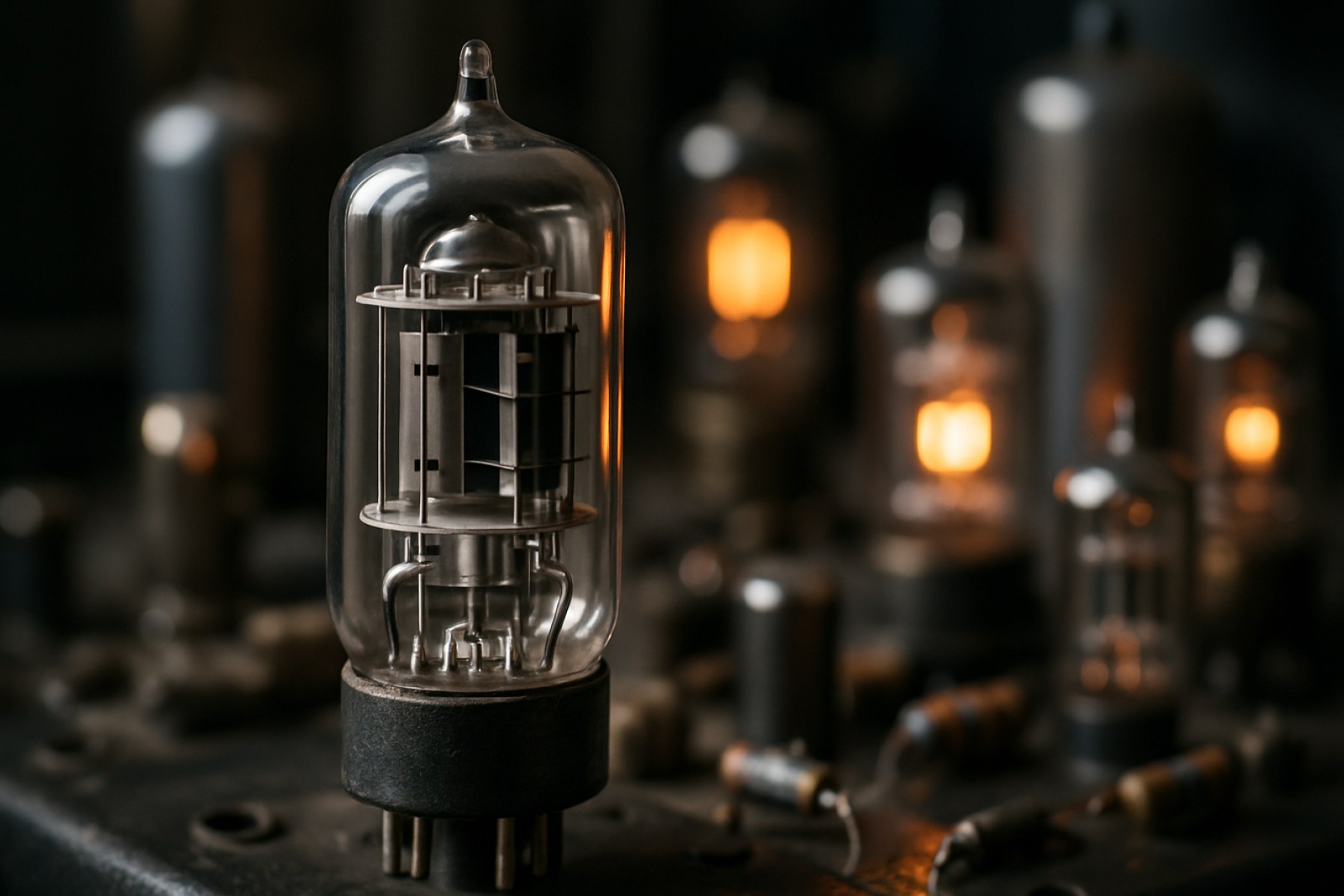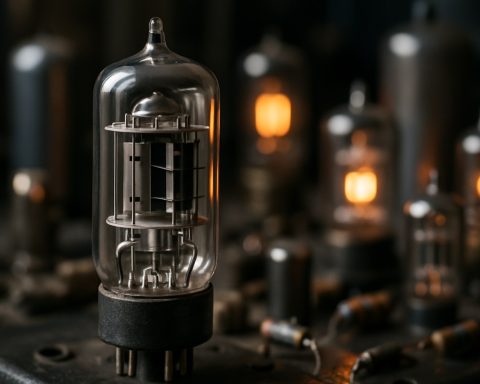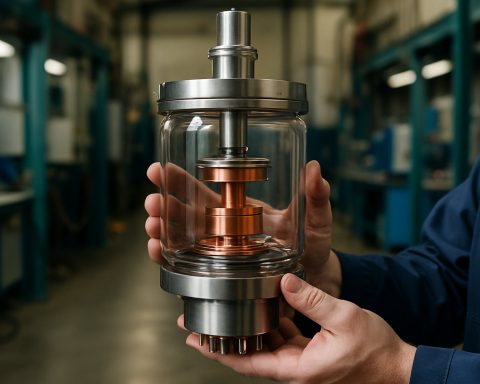Tetrode Vacuum Tubes Explained: How Four Electrodes Revolutionized Amplification and Radio Technology
- Introduction to Tetrode Vacuum Tubes
- Historical Development and Invention
- How Tetrode Tubes Work: Structure and Function
- Advantages Over Triode Tubes
- Common Applications in Electronics and Broadcasting
- Key Performance Characteristics
- Notable Variants and Innovations
- Challenges and Limitations
- Modern Relevance and Collectors’ Interest
- Conclusion: The Lasting Impact of Tetrode Vacuum Tubes
- Sources & References
Introduction to Tetrode Vacuum Tubes
Tetrode vacuum tubes represent a significant advancement in the evolution of electronic amplification technology. Introduced in the 1920s, the tetrode is a type of thermionic valve that builds upon the earlier triode design by incorporating a fourth electrode, known as the screen grid, between the control grid and the anode (plate). This additional grid serves to reduce the undesirable capacitance between the anode and the control grid, which in triodes often led to unwanted feedback and oscillation at high frequencies. As a result, tetrodes offered improved performance in radio frequency (RF) amplification and were quickly adopted in both commercial and military radio equipment during the early to mid-20th century Radiomuseum.org.
The introduction of the screen grid in tetrodes not only enhanced frequency response but also increased the amplification factor, making these tubes highly suitable for use in radio transmitters, receivers, and early television sets. However, the tetrode design was not without its challenges; the phenomenon known as “secondary emission” could cause irregularities in the tube’s characteristic curves, leading to the development of the pentode, which added a fifth electrode to address this issue Encyclopædia Britannica. Despite this, tetrodes remained a crucial stepping stone in the history of vacuum tube technology, bridging the gap between the simple triode and more complex multi-grid tubes. Their legacy persists in specialized applications and in the study of electronic history.
Historical Development and Invention
The historical development of tetrode vacuum tubes marks a significant advancement in electronic amplification technology during the early 20th century. The tetrode, distinguished by its four active elements—cathode, anode (plate), control grid, and screen grid—was invented to address the limitations of the earlier triode tube, particularly the issue of inter-electrode capacitance that restricted high-frequency performance. The invention of the tetrode is credited to Walter H. Schottky, a German physicist, who introduced the concept of the screen grid in 1919. This additional grid, placed between the control grid and the anode, effectively shielded the control grid from the anode, thereby reducing the Miller effect and enabling higher gain and improved frequency response Encyclopædia Britannica.
The first commercial tetrode tubes appeared in the mid-1920s, with the Philips company in the Netherlands playing a pivotal role in their mass production and adoption in radio receivers and transmitters Philips. The introduction of the screen grid not only enhanced amplification but also allowed for more stable and efficient circuit designs. However, early tetrodes exhibited a phenomenon known as “secondary emission,” where electrons striking the anode would dislodge additional electrons, sometimes causing negative resistance and instability. This issue was later addressed with the development of the pentode tube, which added a suppressor grid Radiomuseum.org.
Overall, the invention and refinement of the tetrode vacuum tube represented a crucial step in the evolution of electronic devices, paving the way for more complex and reliable amplification technologies in communications and broadcasting.
How Tetrode Tubes Work: Structure and Function
Tetrode vacuum tubes are a significant advancement over triodes, primarily due to their four-electrode structure: the cathode, anode (plate), control grid, and an additional screen grid. The cathode emits electrons when heated, which are then attracted to the positively charged anode. The control grid, placed between the cathode and anode, modulates the flow of electrons, allowing the tube to amplify signals. The key innovation in tetrodes is the inclusion of the screen grid, positioned between the control grid and the anode. This screen grid is held at a positive potential relative to the cathode but lower than the anode, serving two main purposes: it reduces the capacitance between the anode and control grid, and it shields the control grid from the anode’s electric field, thereby improving frequency response and gain stability.
However, the introduction of the screen grid also leads to a phenomenon known as secondary emission. When high-velocity electrons strike the anode, they can dislodge additional electrons, which may be attracted to the screen grid instead of returning to the anode. This can cause a region of negative resistance in the tube’s characteristic curves, known as the “tetrode kink,” which can lead to instability in amplification. Despite this limitation, tetrodes offered significant improvements in amplification and frequency performance over triodes, making them essential in early radio transmitters and receivers. The development and refinement of tetrode tubes paved the way for further innovations, such as the pentode, which addressed the secondary emission issue by adding a suppressor grid Radiomuseum.org Encyclopædia Britannica.
Advantages Over Triode Tubes
Tetrode vacuum tubes offer several significant advantages over their triode counterparts, primarily due to the addition of a fourth electrode—the screen grid—between the control grid and the plate (anode). This screen grid serves to reduce the capacitance between the control grid and the plate, which is a major limitation in triode designs. By minimizing this inter-electrode capacitance, tetrodes enable higher frequency operation and improved amplification stability, making them especially valuable in radio frequency (RF) amplification and oscillator circuits Radiomuseum.org.
Another key advantage is the increased gain. The screen grid in a tetrode effectively shields the control grid from the plate, allowing the tube to achieve much higher voltage amplification factors than triodes. This results in greater efficiency and sensitivity in electronic circuits, particularly in applications requiring strong signal amplification Electronics Notes.
Tetrodes also exhibit reduced Miller effect, which is the unwanted feedback caused by the capacitance between the control grid and the plate. This reduction further enhances their suitability for high-frequency applications. Additionally, tetrodes can operate at higher plate voltages and deliver more output power than triodes of similar size, making them preferable in transmitter and audio power amplifier roles Encyclopædia Britannica.
In summary, the tetrode’s design improvements over the triode translate into higher gain, better frequency response, and greater power handling, establishing it as a critical advancement in vacuum tube technology.
Common Applications in Electronics and Broadcasting
Tetrode vacuum tubes have played a pivotal role in the evolution of electronics and broadcasting, particularly from the 1920s through the mid-20th century. Their primary advantage over triodes is the inclusion of a screen grid, which significantly reduces inter-electrode capacitance and improves amplification efficiency. This made tetrodes especially valuable in radio frequency (RF) amplification, where stability and gain are critical. In radio transmitters and receivers, tetrodes were widely used as RF amplifiers, oscillators, and frequency mixers, enabling higher power outputs and more reliable signal processing compared to earlier tube designs.
In the realm of broadcasting, tetrode tubes became the standard for high-power AM and FM radio transmitters, as well as early television transmitters. Their ability to handle higher voltages and deliver greater output power made them ideal for these demanding applications. For instance, the Radiomuseum documents the extensive use of tetrodes in broadcast transmitters, where their efficiency and linearity were crucial for clear signal transmission.
Beyond broadcasting, tetrodes found applications in audio amplification, radar systems, and scientific instrumentation. In audio, they were used in both preamplifier and power amplifier stages, valued for their improved linearity and reduced distortion. In radar and industrial RF heating, tetrodes provided the necessary power and frequency stability. Although largely supplanted by solid-state devices today, tetrode vacuum tubes remain in use for specialized high-power RF applications and are still favored by some audio enthusiasts for their distinctive sound characteristics RFCafe.
Key Performance Characteristics
Tetrode vacuum tubes are distinguished by several key performance characteristics that have made them valuable in both historical and modern electronic applications. One of the most significant attributes is their high amplification factor, which results from the addition of a screen grid between the control grid and the plate. This screen grid reduces the capacitance between the control grid and the plate, thereby minimizing unwanted feedback and allowing for greater voltage gain and improved frequency response. As a result, tetrodes are particularly effective in radio frequency (RF) amplification and oscillator circuits, where stability and gain are critical Radiomuseum.org.
Another important characteristic is the tetrode’s ability to operate at higher frequencies compared to triodes. The screen grid not only enhances gain but also suppresses the Miller effect, which can otherwise limit high-frequency performance. However, tetrodes are susceptible to a phenomenon known as the “tetrode kink” in their characteristic curves, caused by secondary emission from the plate. This can lead to non-linearities and instability in certain operating conditions. To address this, later designs such as the pentode introduced a suppressor grid to mitigate these effects Electronics Notes.
Tetrodes also offer improved efficiency in power amplification, making them suitable for use in transmitters and audio amplifiers. Their ability to deliver higher output power with lower distortion, compared to triodes, has ensured their continued relevance in specialized high-power and high-frequency applications RFCafe.
Notable Variants and Innovations
Tetrode vacuum tubes, while fundamentally characterized by their four-electrode structure, have seen numerous notable variants and innovations that address specific performance challenges and expand their applications. One significant advancement was the development of the beam tetrode, which introduced beam-forming plates to focus electron flow and reduce secondary emission effects that plagued early tetrodes. This design, pioneered in the 1930s, improved efficiency and linearity, making beam tetrodes highly popular in audio amplification and radio transmission. The Radiomuseum details how these tubes, such as the 6L6, became industry standards due to their robust performance.
Another important innovation was the kinkless tetrode, which specifically addressed the “kink” in the characteristic curve caused by secondary emission from the screen grid. By optimizing electrode geometry and materials, manufacturers like Mullard produced kinkless tetrodes (KT series) that offered improved linearity and power handling, further cementing the tetrode’s role in high-fidelity and broadcast applications.
Additionally, specialized tetrodes such as the space-charge tetrode were developed for low-voltage operation, particularly in car radios and portable equipment. These variants utilized an extra grid to control space charge, enabling effective amplification at lower voltages, as documented by Nostalgia Air. Collectively, these innovations have ensured the continued relevance of tetrode vacuum tubes in both historical and niche modern electronics.
Challenges and Limitations
Tetrode vacuum tubes, while representing a significant advancement over triodes due to their improved amplification and reduced inter-electrode capacitance, are not without notable challenges and limitations. One of the most prominent issues is the phenomenon known as “secondary emission.” When electrons strike the anode (plate) with sufficient energy, they can dislodge additional electrons from the plate’s surface. In a tetrode, these secondary electrons may be attracted to the screen grid, rather than returning to the plate, resulting in a region of negative resistance in the tube’s characteristic curves. This effect can cause instability, distortion, and even oscillation in amplifier circuits, severely limiting the tube’s performance in certain applications Radiomuseum.org.
Another limitation is the relatively high screen grid current, which can lead to excessive power dissipation and potential damage if not properly managed. The screen grid, while effective at reducing capacitance and improving gain, must be carefully supplied with a stable voltage and often requires additional circuitry for protection Electronics Notes. Furthermore, tetrodes are more complex to manufacture than triodes, resulting in higher production costs and increased susceptibility to manufacturing defects.
These challenges ultimately led to the development of the pentode, which introduced a suppressor grid to mitigate secondary emission effects. Despite their limitations, tetrodes remain historically significant and are still used in specific high-frequency and high-power applications where their unique characteristics are advantageous Encyclopædia Britannica.
Modern Relevance and Collectors’ Interest
Despite the dominance of solid-state electronics, tetrode vacuum tubes retain a notable presence in both specialized modern applications and among collectors. In high-power radio frequency (RF) amplification, particularly for broadcast transmitters and scientific equipment, tetrodes are still valued for their robustness and ability to handle high voltages and currents. Their linearity and efficiency in certain amplifier designs make them preferable in some professional audio and RF contexts, where solid-state alternatives may not fully replicate the desired performance characteristics. For example, some high-end audio amplifiers and vintage radio transmitters continue to utilize tetrode tubes for their distinctive sound and operational qualities, as documented by the Radiomuseum.org.
Collectors and enthusiasts are drawn to tetrode vacuum tubes for their historical significance and engineering aesthetics. The rarity of certain models, especially those produced in limited runs or by now-defunct manufacturers, has driven a vibrant market for vintage tubes. Collectors often seek out tetrodes not only for restoration projects but also as display pieces, appreciating the craftsmanship and technological innovation they represent. Online communities and marketplaces facilitate the exchange and authentication of these components, with resources such as the Tube Collectors Association providing valuable information and networking opportunities. As a result, tetrode vacuum tubes continue to bridge the gap between historical technology and contemporary appreciation, maintaining relevance in both technical and cultural spheres.
Conclusion: The Lasting Impact of Tetrode Vacuum Tubes
Tetrode vacuum tubes have left an indelible mark on the evolution of electronic technology, bridging the gap between early triode designs and the more advanced pentode and solid-state devices that followed. Their introduction of a screen grid between the control grid and the plate significantly improved amplification efficiency and frequency response, enabling the development of high-fidelity radio receivers, early television transmitters, and radar systems during the mid-20th century. The tetrode’s ability to minimize the Miller effect and reduce unwanted capacitance was pivotal in achieving higher gain and stability in electronic circuits Radiomuseum.org.
Although largely supplanted by transistors and integrated circuits in most modern applications, tetrode vacuum tubes remain relevant in specialized fields such as high-power radio frequency amplification and certain audio applications, where their unique characteristics are still valued NASA Glenn Research Center. Their legacy persists not only in the continued use of tube-based equipment but also in the foundational principles they established for electronic amplification and signal processing. The tetrode’s influence is evident in the design philosophies of subsequent electronic components, underscoring its lasting impact on both the history and future trajectory of electronics IEEE.










